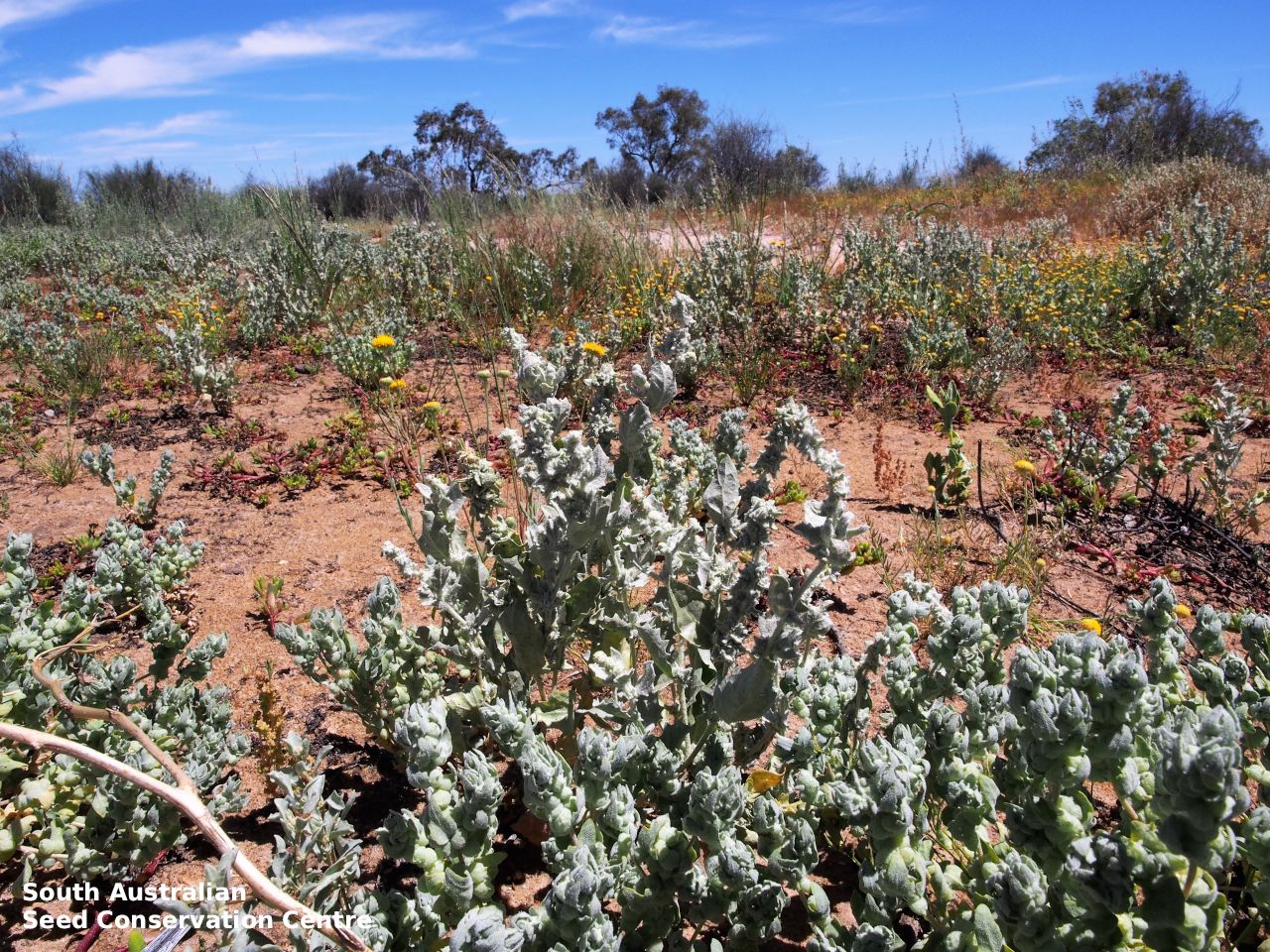

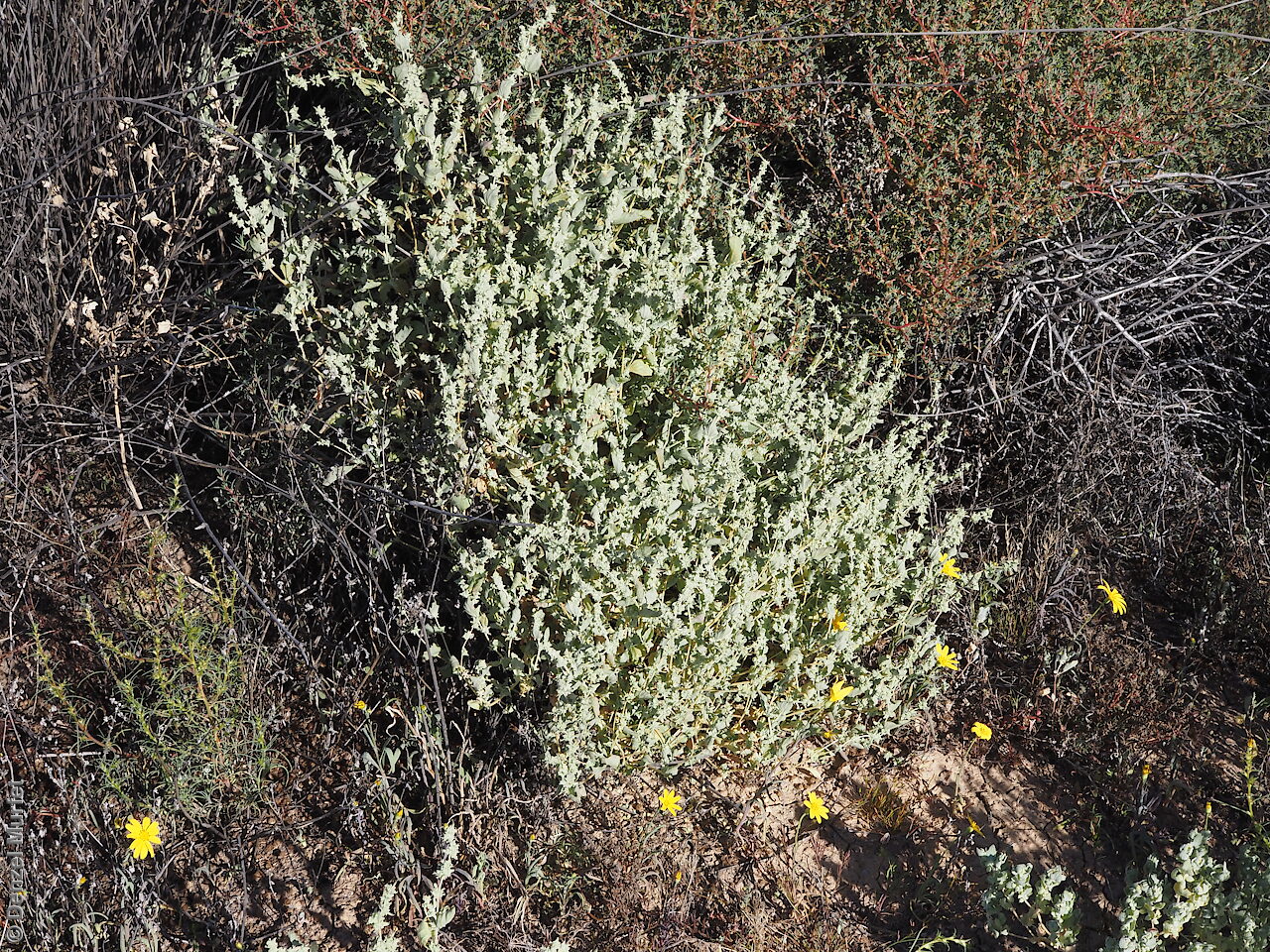
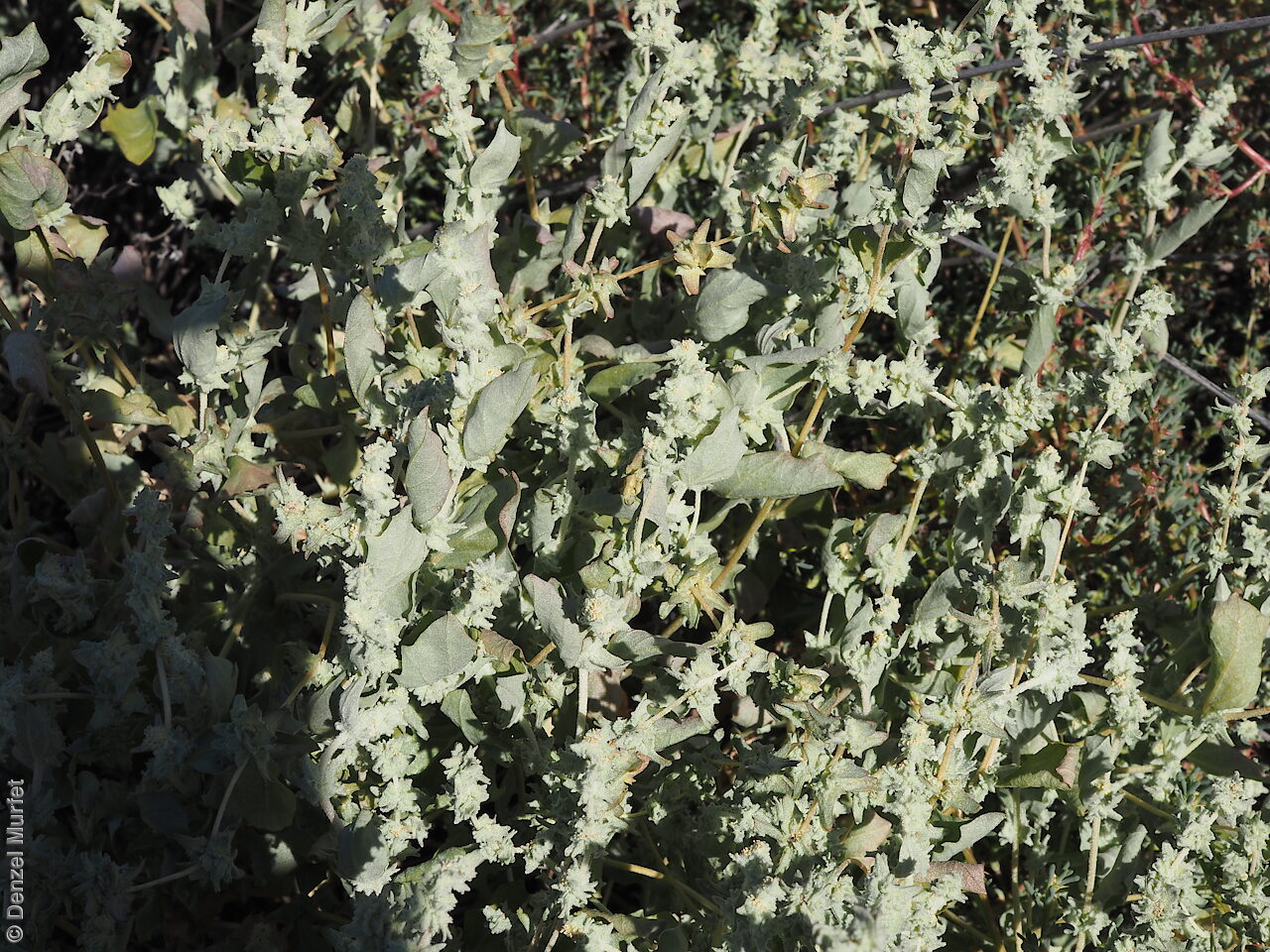
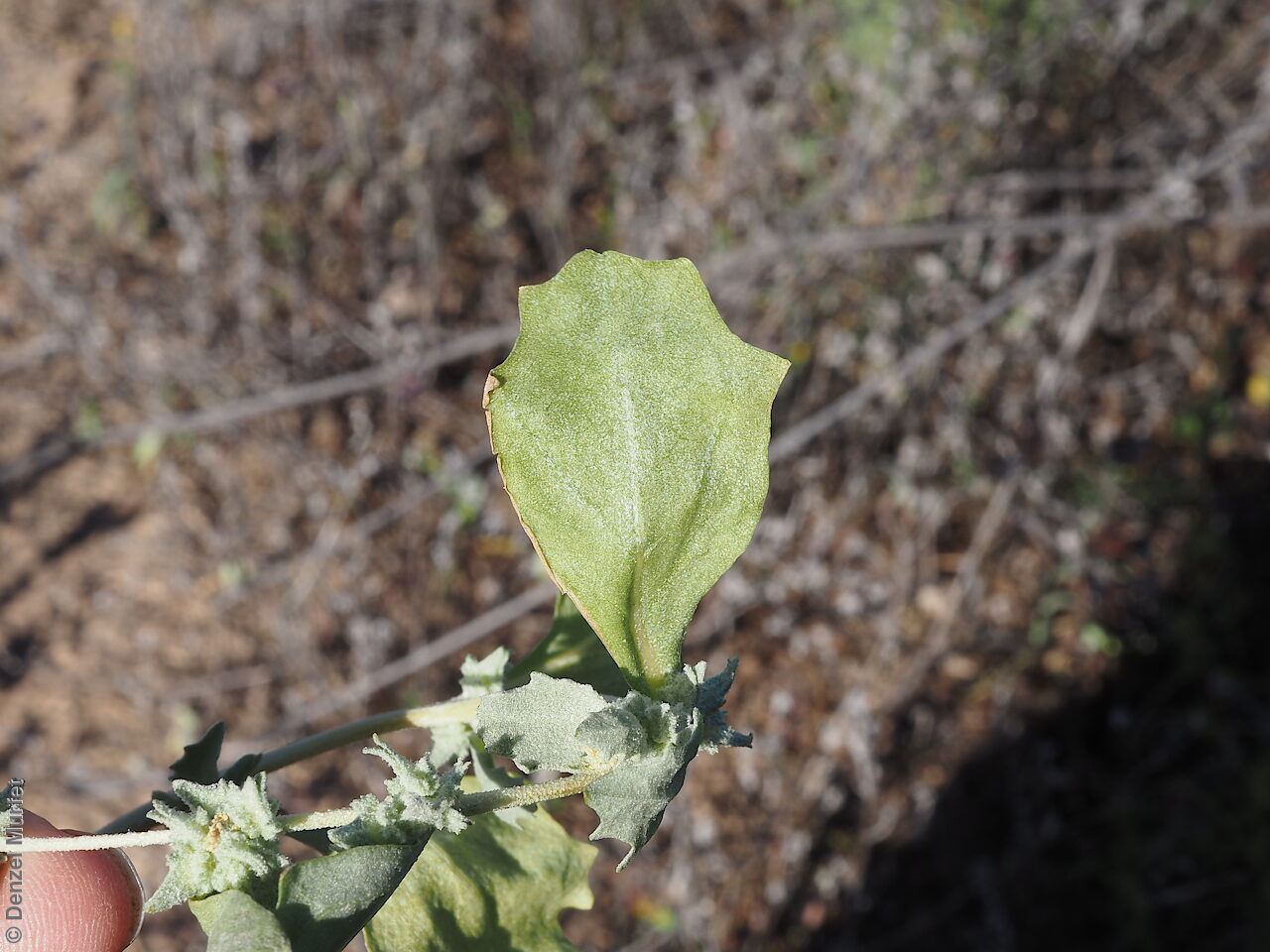
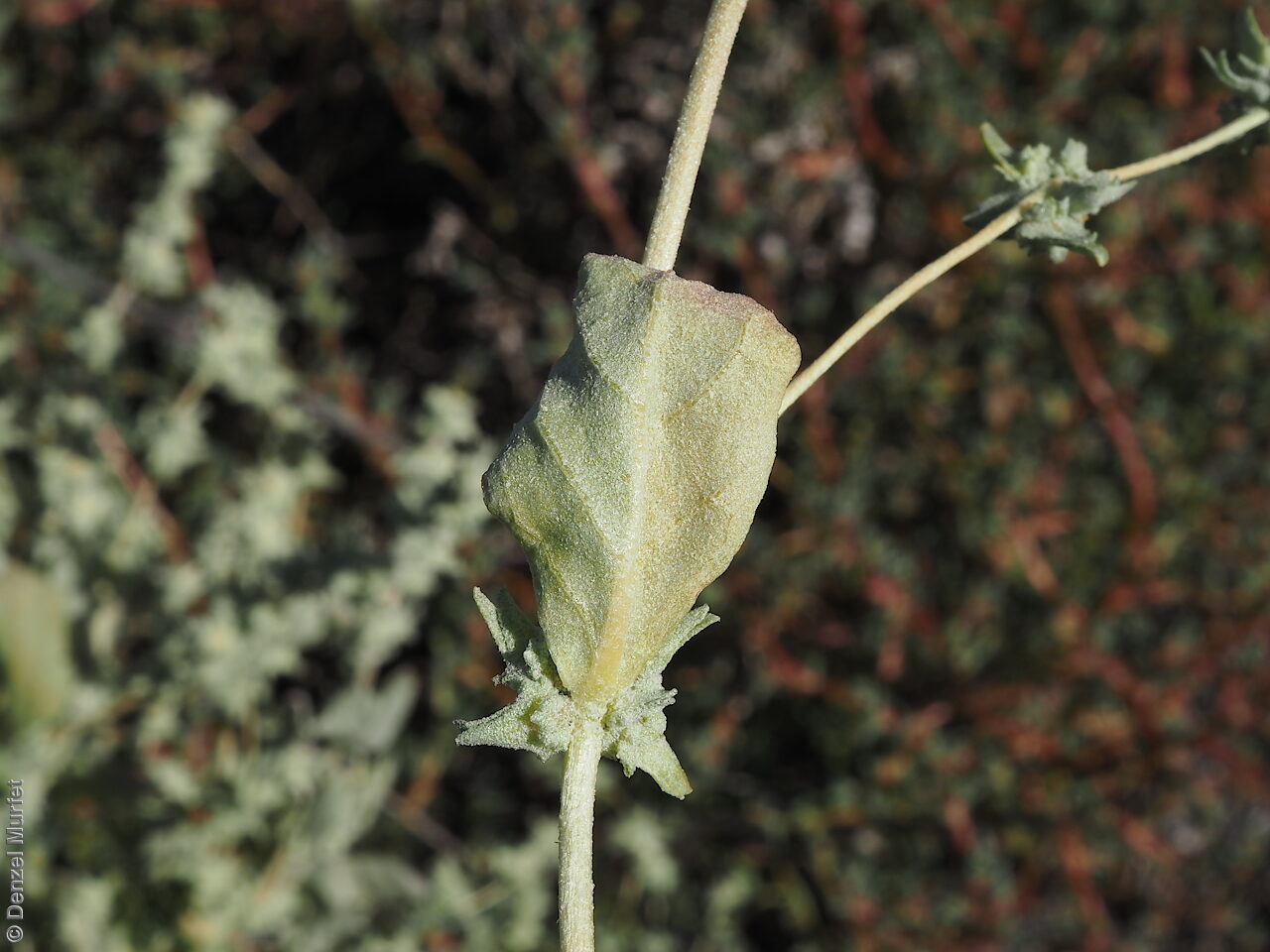
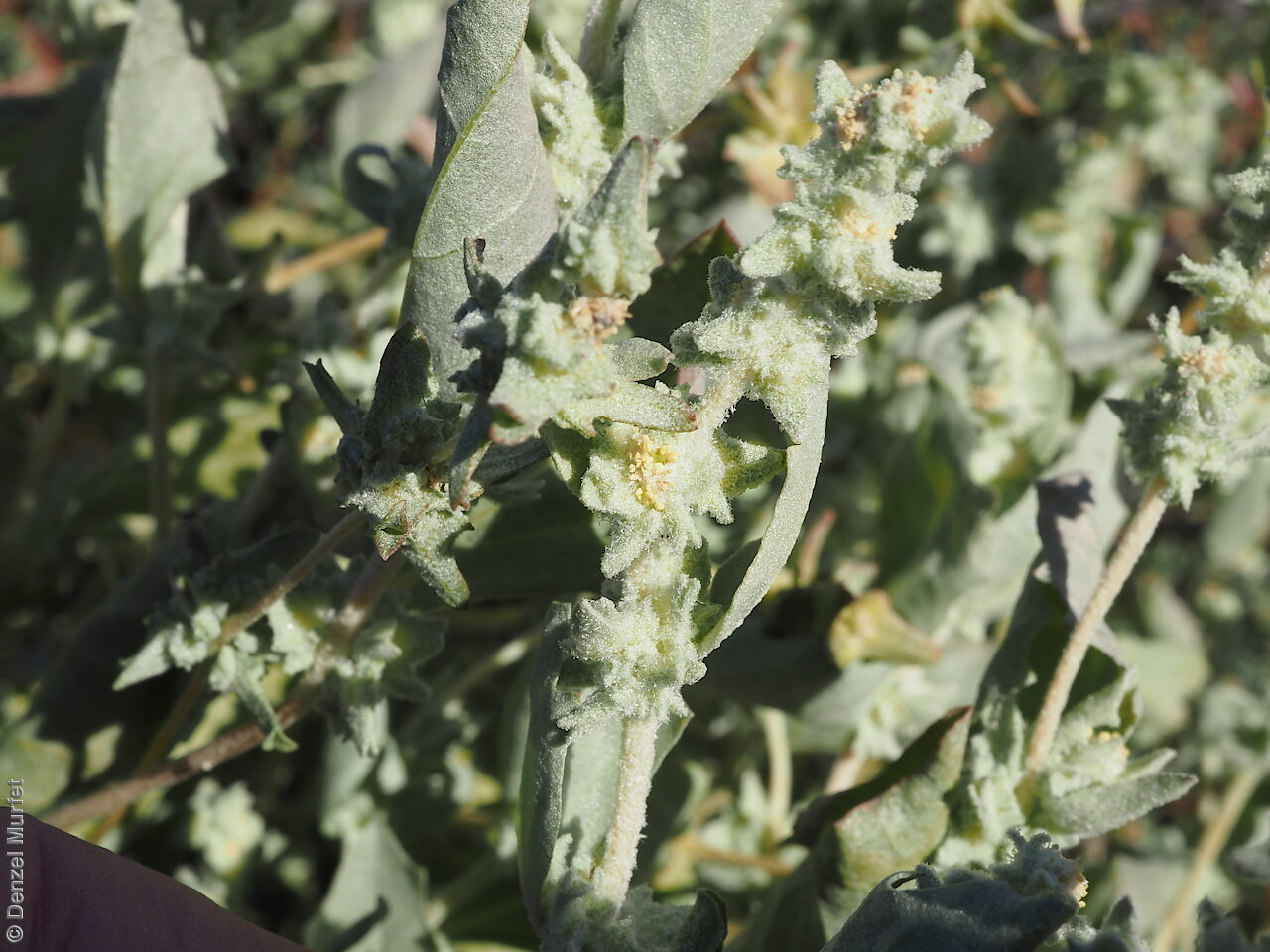
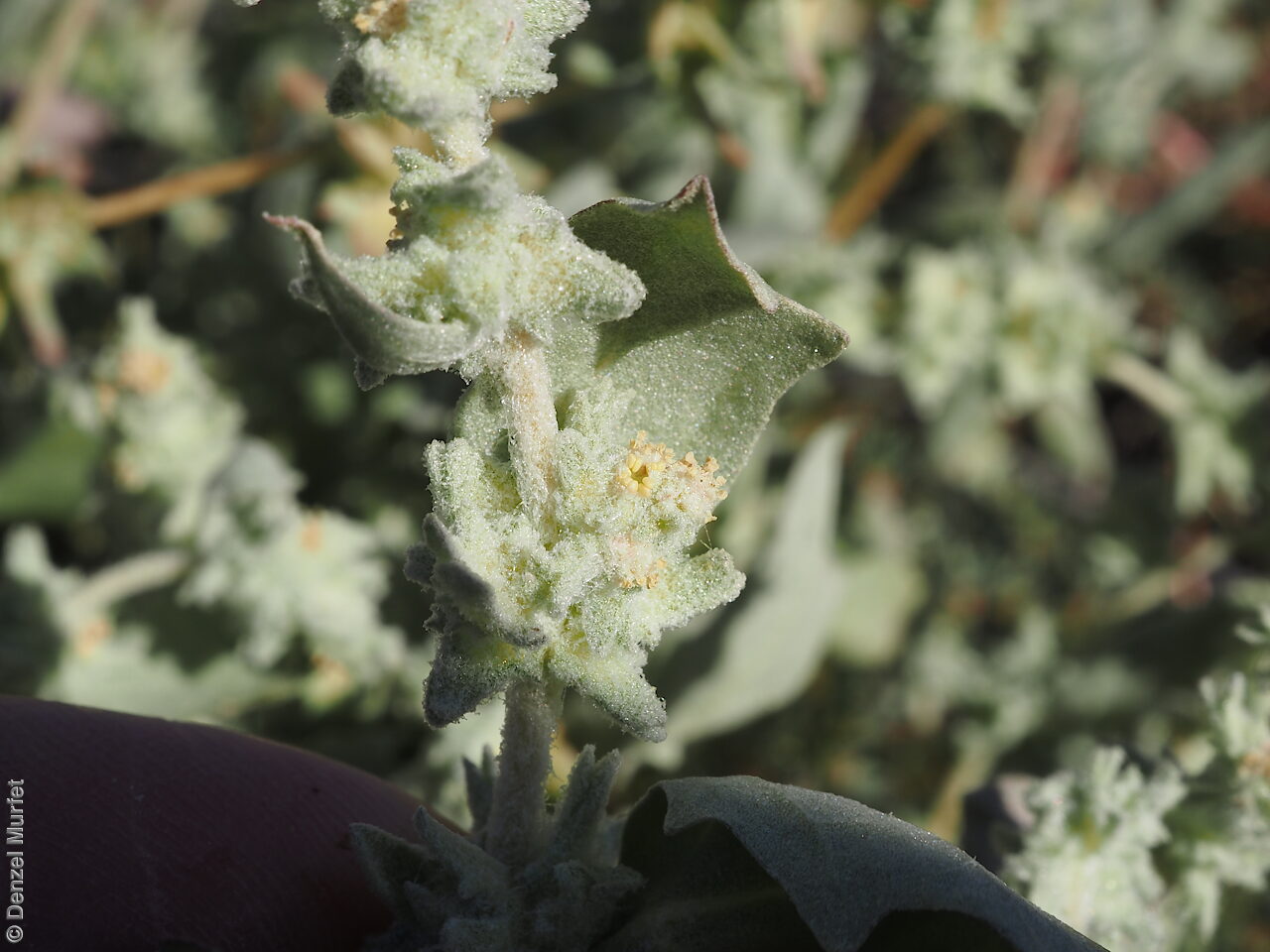
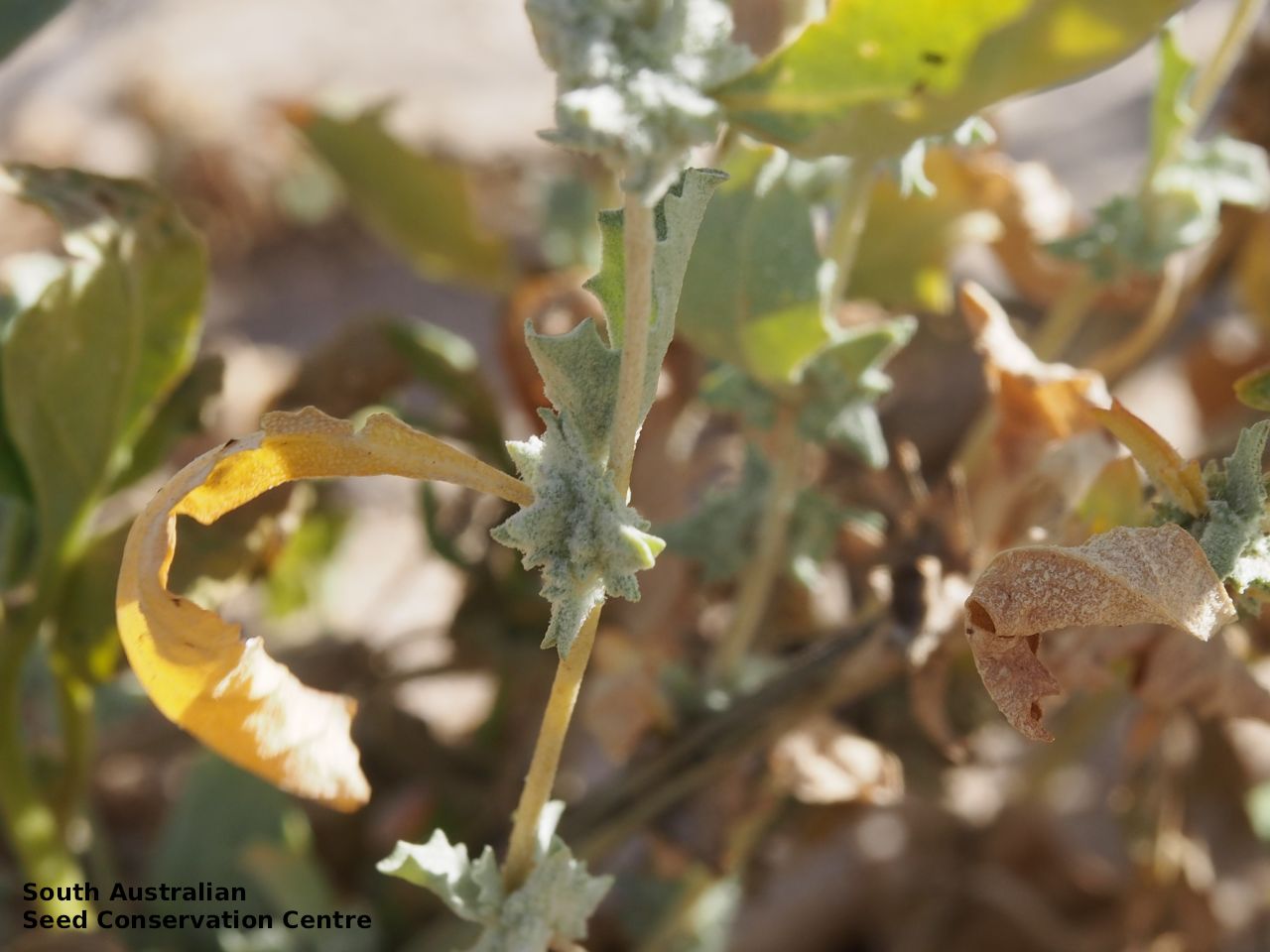
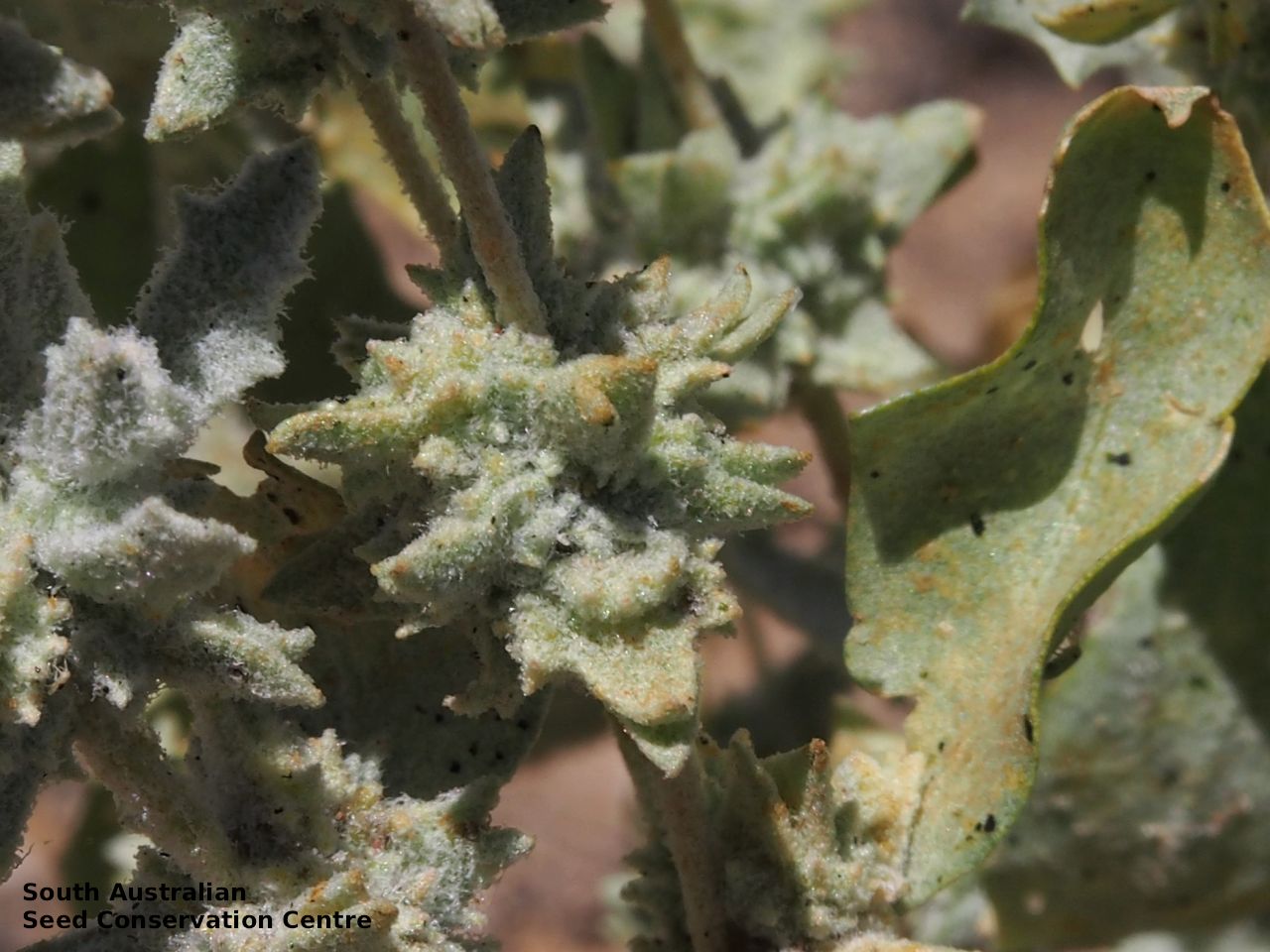
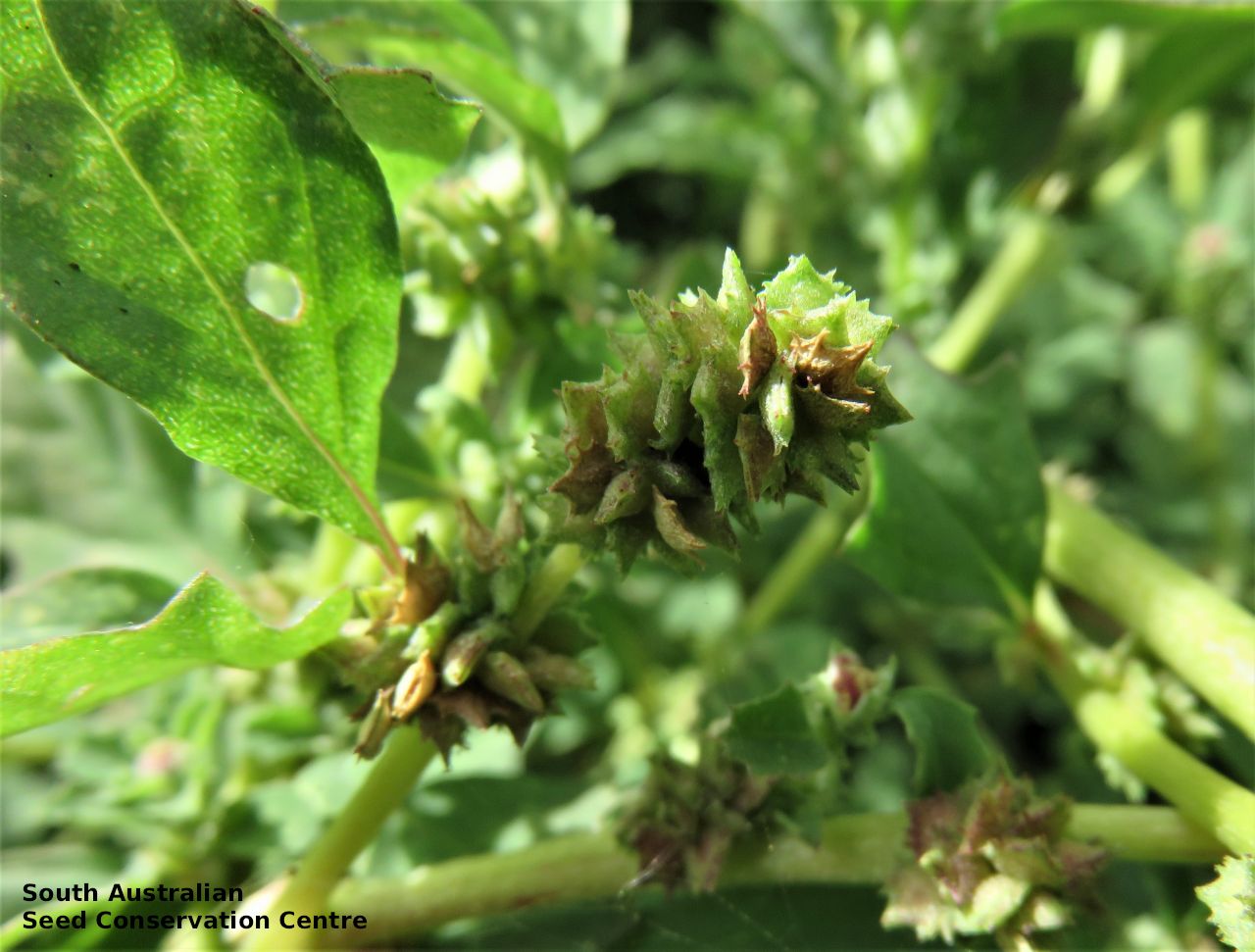
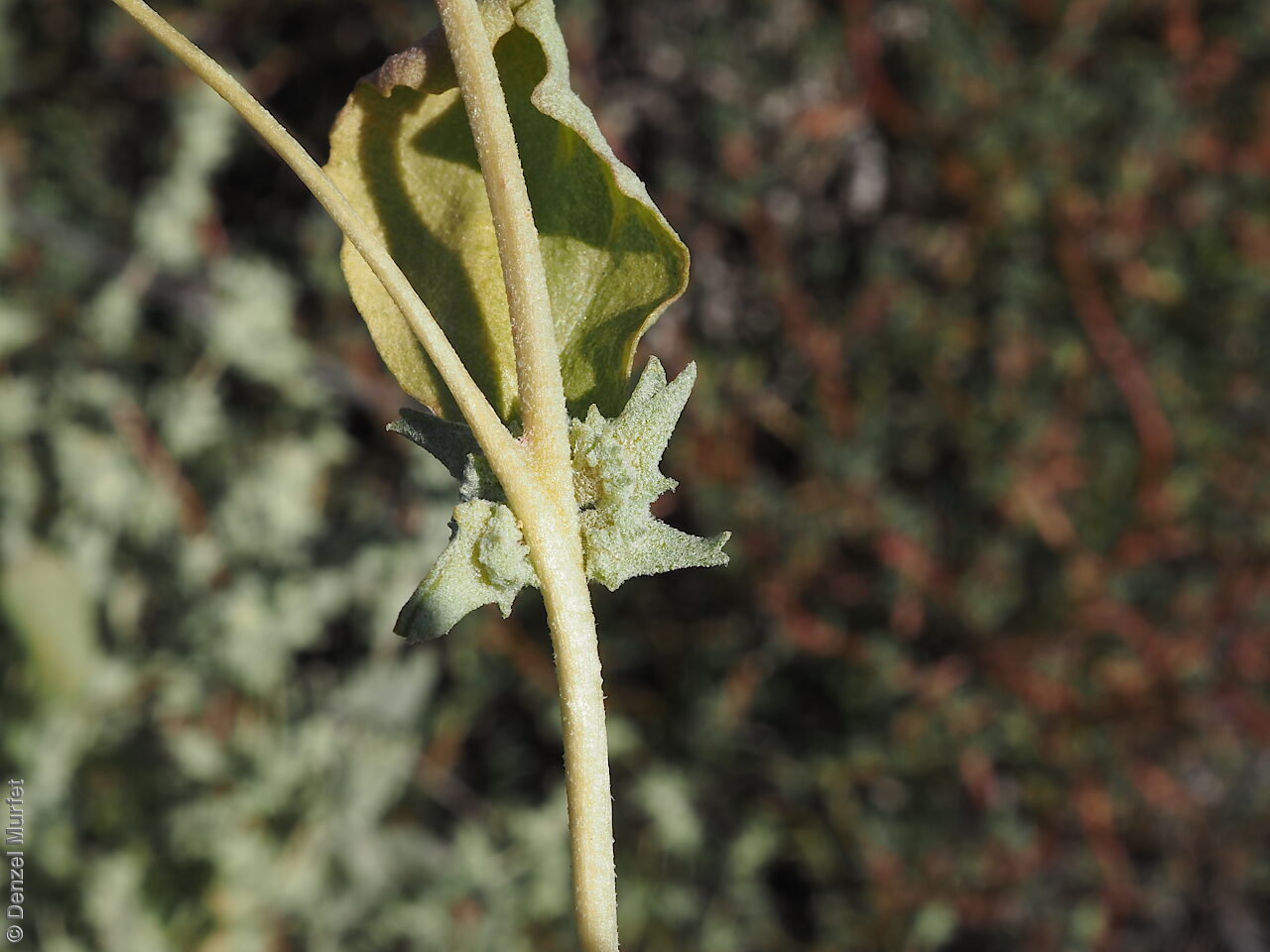
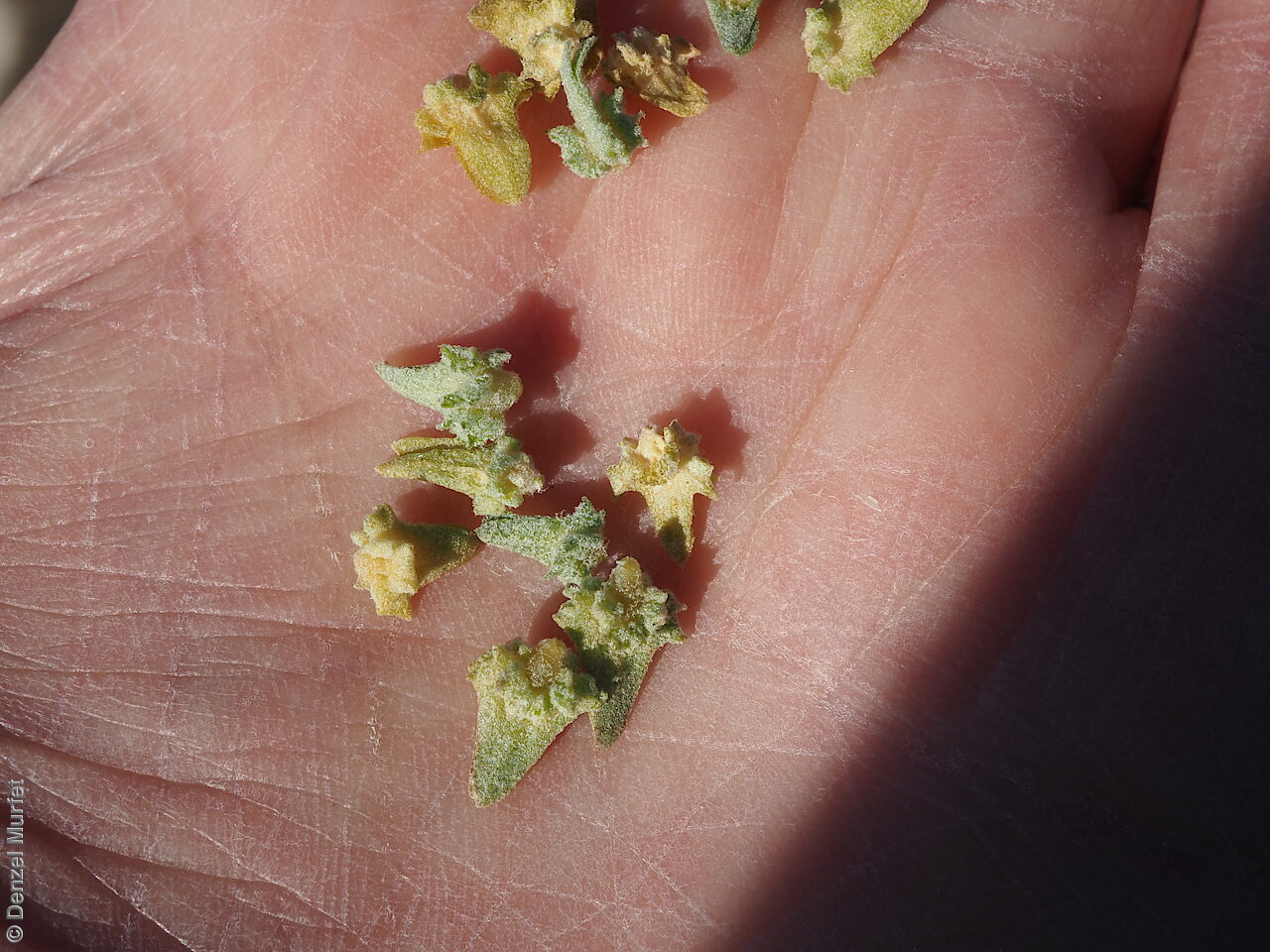
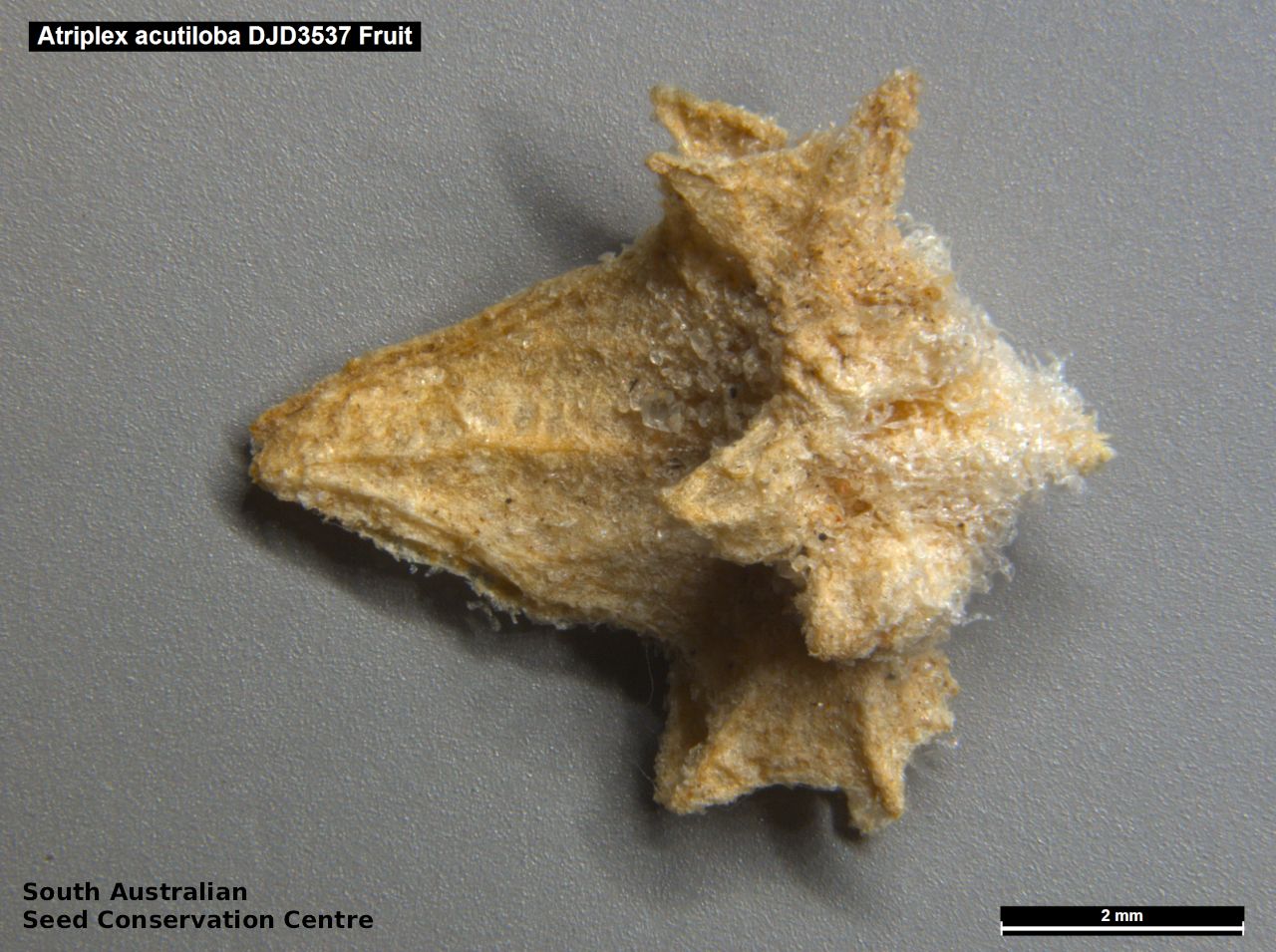
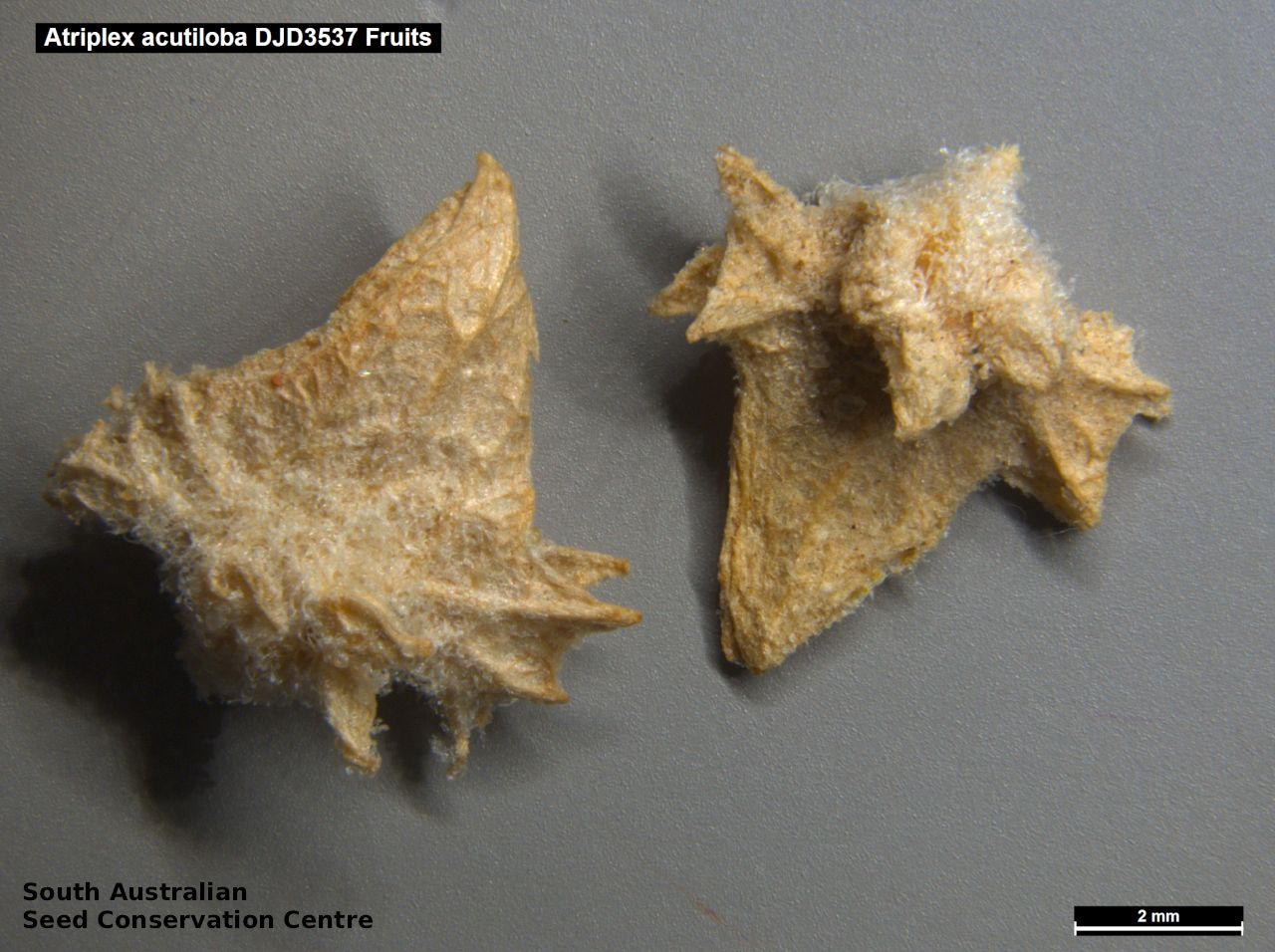
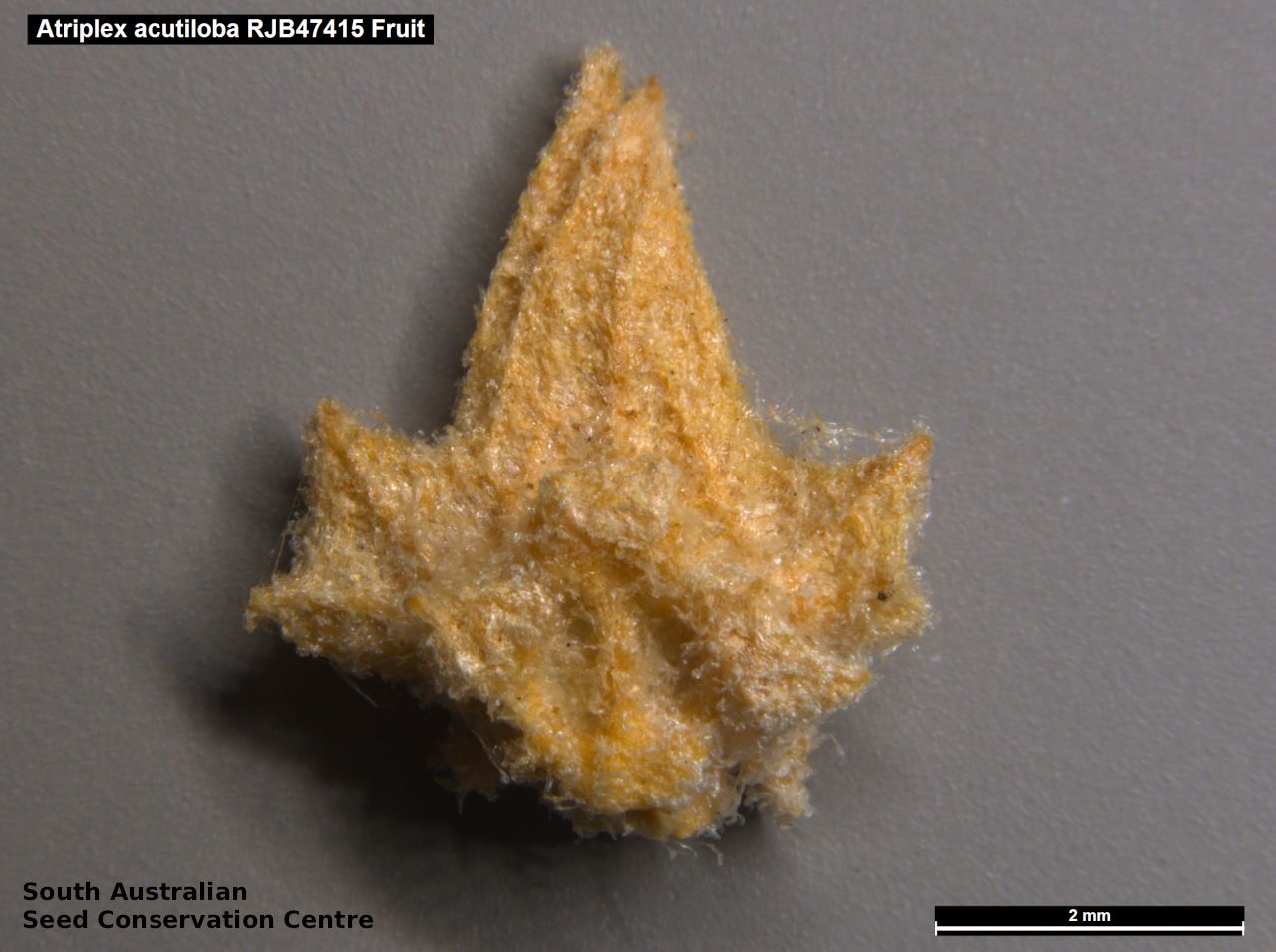
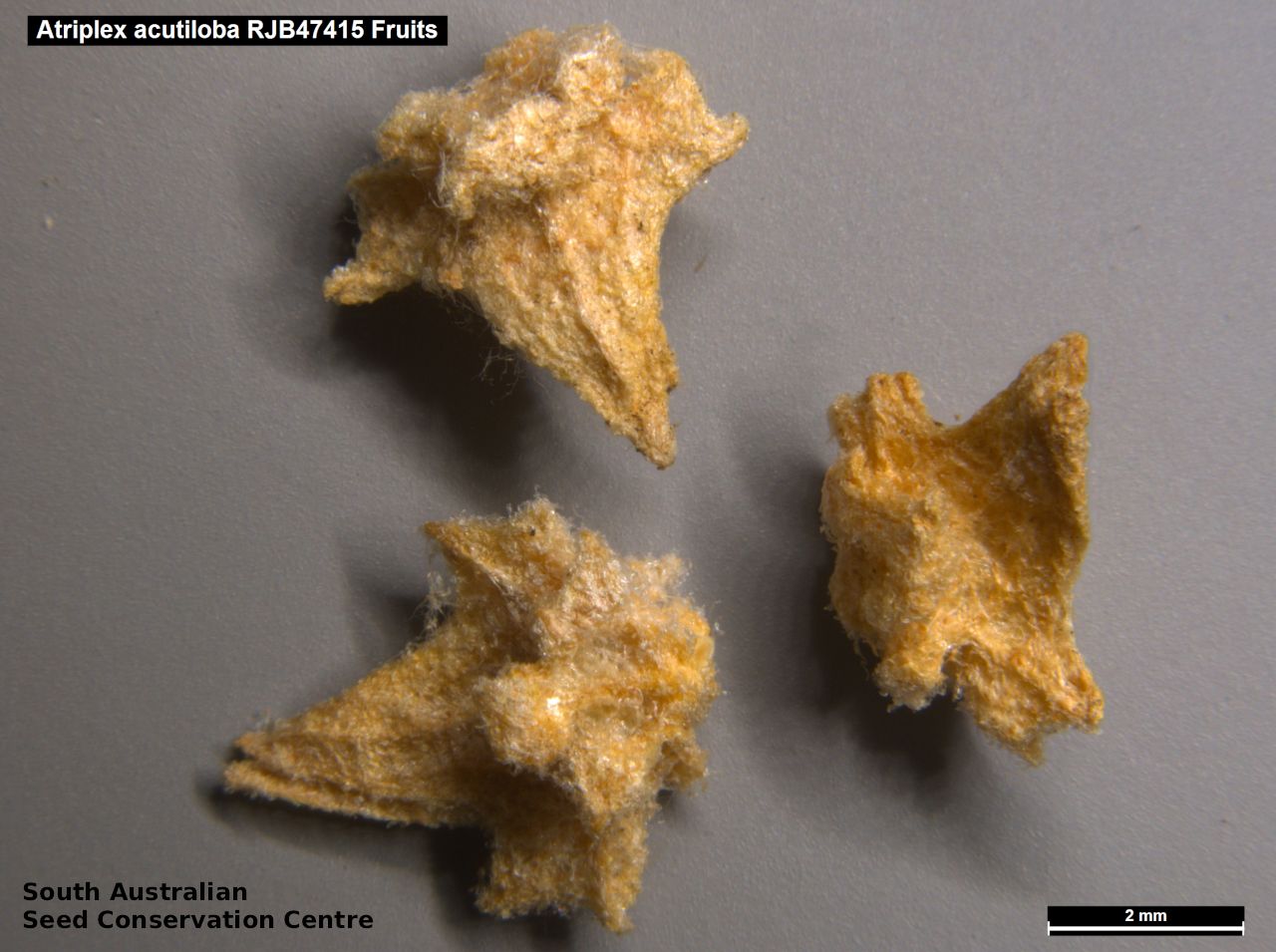
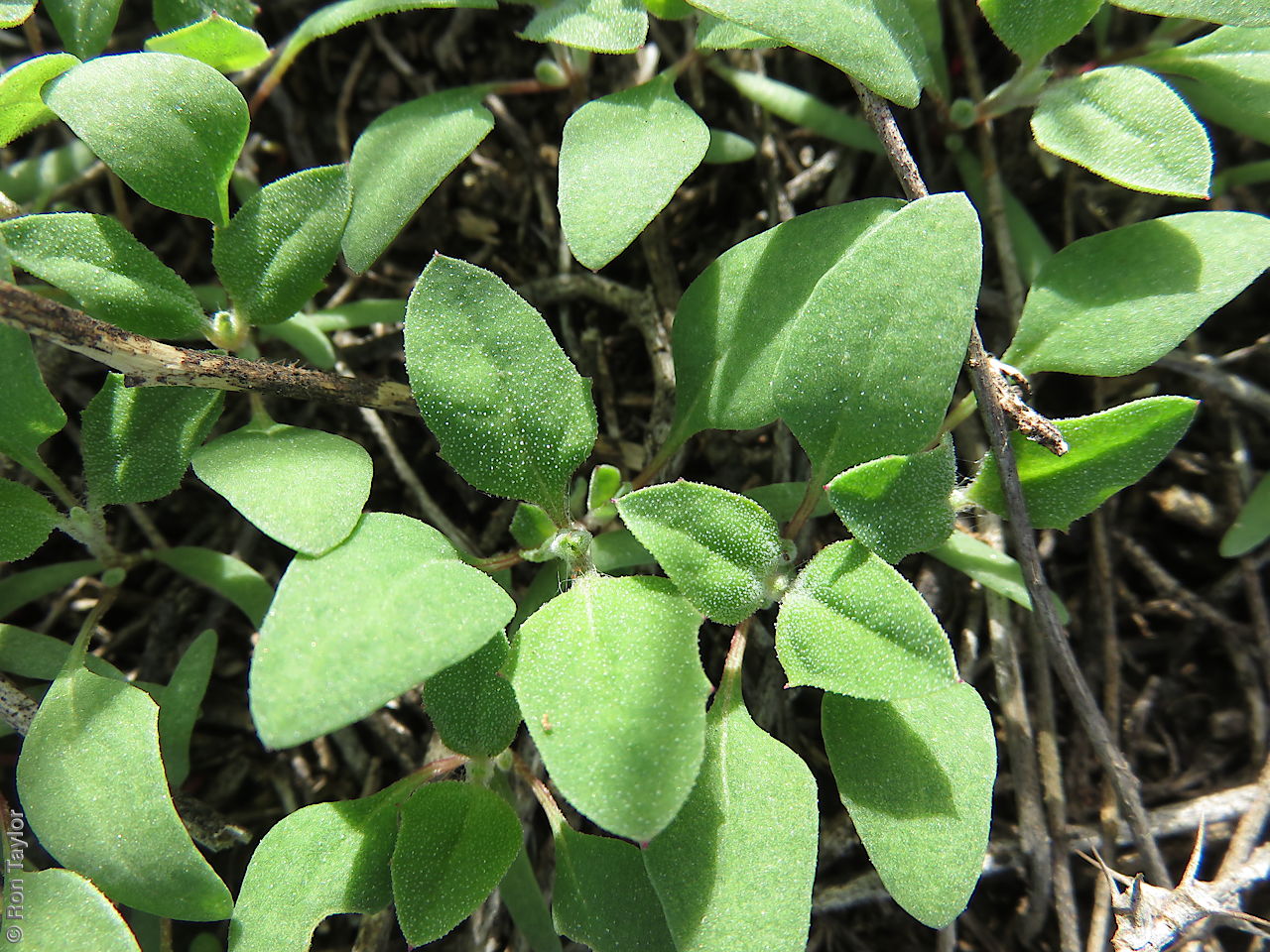

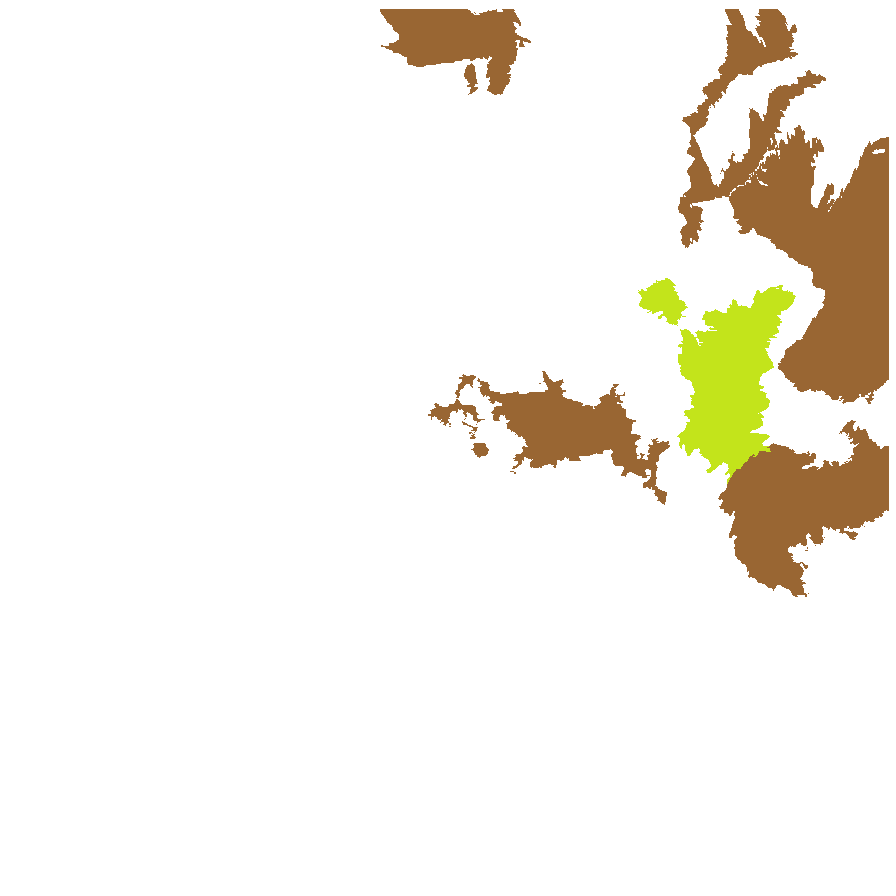
Prior names
Atriplex acutiloba var. velutinelliformis
Etymology
Atriplex from the Latin 'atriplexum' meaning an orach, a saltbush, an Ancient Latin name for this plant. Acutiloba meaning pointed lob, referring to the acutely lobed lamina.
Distribution and status
Scattered across the central eastern and north-eastern part of South Australia. Was also recorded for New South Wales but presumed extinct. Native. Uncommon in South Australia.
Herbarium regions: Lake Eyre, Gairdner-Torrens, Flinders Ranges, Eastern, Eyre Peninsula, Murray
NRM regions: Eyre Peninsula, South Australian Arid Lands, South Australian Murray-Darling Basin
AVH map: SA distribution map (external link)
Plant description
Short-lived perennial shrub to 50 cm high with thin leaves which are hairy on both surfaces and the lamina broadly ovate to broadly elliptic to 4 cm long, acute, acutely lobed, base cuneate. Flowers mixed in clusters, both axillary and forming short disjunct spikes. Flowering between August and September. Fruits are pale brown, papery fruit to 5 mm long and wide, sessile or subsessile, appressed, free to the base, broadly triangular, more or less tomentose with margins prominently dentate and inflated near the base. Seeds are dark brown, circular convex seed to 1.5 mm long and 1mm wide. Seed embryo type is peripheral.
Seed collection and propagation
Collect seeds between October and December. Collect fruits that are starting to turn pale brown, drying off and papery. Fruits can be collected directly from the bush or from the ground underneath. Place the fruits in a tray and leave to dry for one to two weeks. No cleaning is required if only the fruits are collected. The seed can be stored in the fruit or can be cleaned further. Rub the fruit gently by hand to dislodge the seeds. Use a sieve to separate the unwanted material. Store the seeds with a desiccant such as dried silica beads or dry rice, in an air tight container in a cool and dry place.
| Location | No. of seeds (weight grams) | Number of plants | Date collected | Collection number Collection location | Date stored | % Viability | Storage temperature |
|---|---|---|---|---|---|---|---|
| BGA MSB | 7,900 (14.24 g) 7,900 (14.24 g) | 20+ | 7-Sep-2013 | DJD2717 Lake Eyre | 24-Mar-2015 | 100% | -18°C |
Number of plants: This is the number of plants from which the seeds were collected.
Collection location: The Herbarium of South Australia's region name.
% Viability: Percentage of filled healthy seeds determined by a cut test or x-ray.